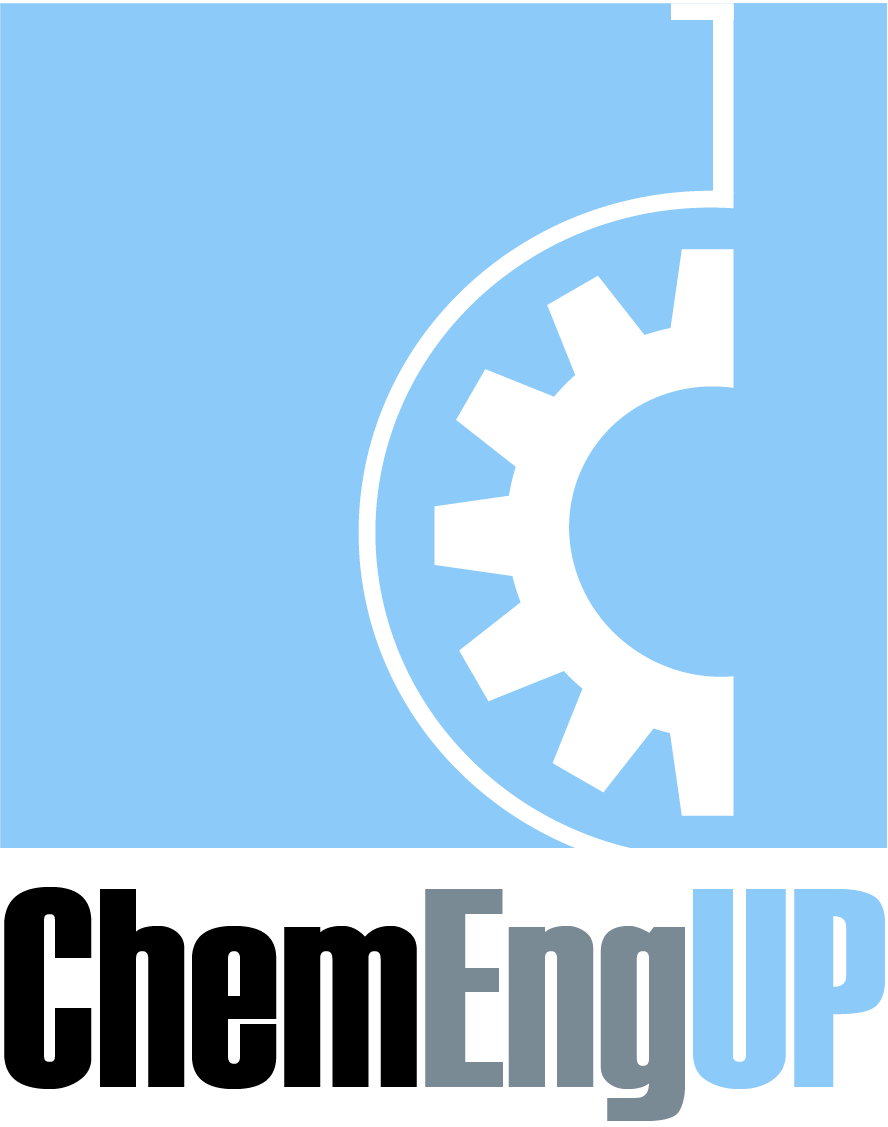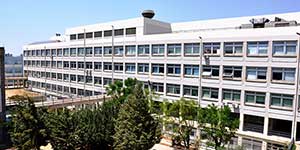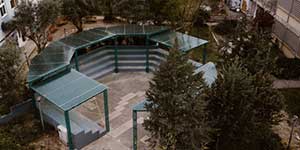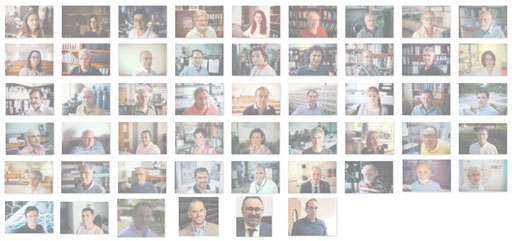- Department
- People
- Studies
Studies in DCEup
Graduate Studies
PhD Program
- New Admissions
- General Description
- Program Requirements
- Courses
- Class Schedule
- Oral presentation
- Research Work
- PhD Thesis Defense
- Previous PhD Theses
- Exams Schedule
Master's Program
- Students
- Alumni

ChemEngUP Alumni
- Research
- News & Events
PhD Thesis Defence Presentations - Alexandra Ioannidi

Presentation Title (Τίτλος Παρουσίασης): Hybrid oxidation processes in tertiary wastewater treatment
Presentation Type (Τύπος Παρουσίασης): PhD Thesis Defence Presentations
Speakers Full Name (Ονοματεπώνυμο): Alexandra Ioannidi
Speakers Affiliation (Προέλευση Ομιλητή): Department of Chemical Engineering, University of Patras
Seminar Room (Αίθουσα): "A. C. Payatakes" Library
Event Date: Mon, Oct 30 2023,
Time:
16:00 - 18:00
Live webConference Link: https://upatras-gr.zoom.us/j/99810690873?pwd=WHhkaFRwZ1ZtRU9KSFo4aCtkLzhOQT09
Abstract (Περίληψη)
Thousands of anthropogenic substances such as insecticides, pesticides, cosmetics, medicines are being manufactured for the sake of improving human life and increasing the average life expectancy. But the reckless consumption of such compounds and the formation of undesirable by-products related to their processing, such as chlorine, dioxins and heavy metals, lead to the pollution of the aquatic environment.
Their occurrence in seas, rivers, lakes and groundwater has been a global problem in recent decades and they are categorized as emerging contaminants or micropollutants. Micropollutants are only partially removed through conventional wastewater treatment systems. Many researchers have reported the existence of micropollutants at wastewater effluents and surface waters at environmentally relevant concentrations. In this view, additional wastewater treatment is needed, beyond the standard secondary treatment, to ensure the safe disposal of wastewater to the environment.
In recent years, the so-called advanced oxidation processes (AOPs) are perhaps the most important methods for micropollutants removal, and they have recently been applied as powerful and effective technologies for wastewater purification and pathogen elimination.
The present thesis aims to investigate the removal of micropollutants such as antibiotics, anti-inflammatory, antihypertensive drugs and endocrine disruptors from the aquatic environment by applying various AOPs, using new catalytic materials and focusing on real water matrices. Furthermore, this thesis aims to test the ability of heterogeneous persulfate activation systems to simultaneously inactivate pathogenic bacteria such as Escherichia coli and degrade micropollutants.
Firstly, the degradation of losartan (LOS), a widely administered medicine for high blood pressure, by the heat activated persulfate (SPS) method was investigated. The results showed that increased temperature and persulfate concentration, as well as acidic conditions, enhance the degradation of LOS, whose rate follows pseudo-first order kinetics. Radical scavenging tests demonstrated that both HO• and contribute towards LOS degradation. LOS degradation was suppressed in real water matrices including bottled water (BW) and secondary wastewater effluent (WW), while other experiments indicated that the presence of bicarbonate and humic acid negatively affected oxidation. Instead, the addition of chloride ion at 250 mg/L resulted in a positive effect on LOS removal. The combination of heat-activated SPS with low-frequency ultrasound exhibited a synergistic effect, with the synergy ratio, S, being 2.29 in BW and 1.52 in WW. Five transformation products of LOS were identified with UPLC- Q-TOF-MS/MS, among which two are reported for the first time. Using the risk assessment program ToxTrAMs, it was revealed that most of the identified poducts exhibit higher toxicity than LOS against Daphnia magna.
In further studies, sonochemical oxidation was employed for the degradation of the drug dexamethasone (Dex). Oxidation at 20 kHz followed pseudo-first-order kinetics and increased with applied ultrasound power density. Acoustic cavitation at 71 W/L was capable of eliminating 500 μg/L of Dex from ultrapure water at inherent pH in less than 60 min. The reaction was enhanced at pH 3 and decreased at increased Dex concentration. Scavenging experiments with tert-butanol showed that hydroxyl radicals play a crucial role in decomposition, where the reaction mainly occurs on the gas-liquid interface of the formed cavities. The addition of chloride did not affect Dex removal, while the addition of 10 mg/L of humic acid or bicarbonate decreased the apparent kinetic constant from 0.0423 ± 0.004 to 0.03 ± 0.002 . The rate in secondary effluent was 3.3 times lower than in ultrapure water due to the complexity of the actual matrix. Six transformation products were identified via high resolution LC-MS during the sonochemical oxidation of 3 mg/L Dex in ultrapure water. The presence of polyethylene or polystyrene microplastics slightly enhanced Dex sonodegradation. The effect of ultrasound irradiation at 71 W/L for 60 min on the microplastics surfaces was inconsiderable.
Furthermore, Pd/CeO2 samples of varying composition were synthesized and characterized, while their sonocatalytic activity was evaluated for the degradation of xenobiotic bisphenol A (BPA) from aqueous solutions. Sonocatalytic activity exhibited a volcano-type behavior in relation to the Pd loading; the 0.25%Pd/CeO2 sample, which was characterized by the maximum Pd dispersion and lower crystallite size, demonstrated the highest activity. BPA degradation with 500 mg/L of catalyst was twice as fast as sonolysis alone (20 kHz at 71 W/L), while the degree of synergy between sonolysis and the catalyst was computed equal to 50.1%. The sonocatalytic degradation of BPA followed pseudo-first-order kinetics and the apparent kinetic constant increased with ultrasound power and catalyst loading, while the presence of complex matrices decreased the efficiency. From the experiments that were conducted using appropriate scavengers, it was revealed that the degradation mainly occurred on the bubble-liquid interface of the formed cavities, while the reactive species produced from the thermal or light excitation of the prepared semiconductor also participated in the reaction. Five first-stage and four late-stage transformation products were identified using UHPLC/TOF-MS and a pathway for the sonocatalytic degradation of BPA was proposed. According to ECOSAR software prediction, most products show lower ecotoxicity than the parent compound, although some remain toxic to the chosen indicators.
Moreover, the same group of Pd/CeO2 samples were evaluated for the activation of persulfate and the degradation of BPA. The efficiency followed a volcano-type behavior with respect to Pd loading, and the 0.25%Pd/CeO2 sample exhibited the highest catalytic activity. However, activity strongly depended on the operating conditions. The system was able to degrade 500 μg/L BPA in less than 30 min, and the removal was favored at inherent pH. Scavenging experiments highlighted the role of superoxide and singlet oxygen, followed by sulfate radicals. Catalyst reuse over several cycles did not practically affect degradation performance. The removal of BPA decreased with increasing water matrix complexity, showing the need for system optimization under real conditions. Five first-stage and three late-stage transformation products were identified using UHPLC-TOF-MS and their ecotoxicity was estimated using ECOSAR. Intriguingly, the system was capable of inactivating 99.99% of 2.4 105 CFU/mL E. coli in less than 210 min making it an appealing alternative technology for the simultaneous inactivation of pathogens and degradation of micropollutants in environmental systems.
A commercially available Mo2C catalytic material was tested, in further studies, as a likely SPS activator for the degradation of LOS. Using 500 mg/L Mo2C and 250 mg/L SPS, 500 μg/L of LOS were degraded in less than 45 min. LOS decomposition was enhanced in acidic pH, while the apparent kinetic constant decreased for higher LOS concentrations. According to the experiments conducted in the presence of scavengers of reactive species, sulfate radicals, hydroxyl radicals, and singlet oxygen participated in LOS oxidation, with the latter being the predominant reactive species. The presence non-target species such as bicarbonate and organic matter reduced the efficiency in real matrices, while interestingly, the addition of chloride accelerated the degradation rate. The catalyst showed remarkable stability, with complete LOS removal being retained after five sequential experiments. The system was examined for the simultaneous LOS decomposition and the elimination of E. coli. The presence of E. coli retarded LOS destruction, resulting in only 30% removal after 180 min, while the system was capable of reducing E. coli concentration by 1.23 log. However, in the presence of simulated solar irradiation, E. coli was reduced by almost 4 log and LOS was completely degraded in 45 min, revealing a significant synergistic effect for the solar/Mo2C/SPS system.
In the context of the circular economy, the use of new catalytic materials made from agro-industrial residues to address environmental problems is a solution with significant advantages. In this respect, biochar from spent malt rootlets was synthesized and then treated by a friendly eco-method using low temperature (100 ℃) and diluted acid or base, or water.
Treatment significantly enhanced the surface area from 100 to 308–428 m2/g, while it changed the morphology, as well as the carbon phase. In addition, the minerals composition and the point of zero charge (PZC) were significantly affected. Among the examined materials, the acid-treated biochar resulted in the highest LOS degradation. Interestingly, the biochar acted as an adsorbent at pH 3, whereas at pH 5.6 and 10, the apparent kinetic constants ratio between oxidation and adsorption was 3.73 0.03, demonstrating that oxidation rather than adsorption is the dominant mechanism. Scavenging experiments indirectly demonstrated that the role of the non-radical mechanism (singlet oxygen) was crucial; however, sulfate and hydroxyl radicals also significantly participated in LOS oxidation. Experiments in secondary effluent resulted in decreased efficiency in comparison to ultrapure water; this is ascribed to the competition between the actual water matrix constituents and the target compound for the active biochar sites and reactive species.
The synthesis and optimization of Urtica dioica (nettle) biochar for the degradation of antibiotic sulfamethoxazole (SMX) with SPS was further investigated. Several operating parameters were tested, as well as the efficiency of the proposed system for simultaneous organics degradation disinfection. The efficiency increased with increasing pyrolysis temperature, and 20%, 30%, 69% and 90% SMX removal was monitored at pyrolysis temperatures of 450 °C, 600 °C, 750 °C and 850 °C, respectively; irrespective of the tested biochar, adsorption was always insignificant. The biochar pyrolyzed for 180 min at 850 °C showed higher activity than those pyrolyzed for 90 and 360 min at the same temperature. SMX decay followed pseudo-first-order kinetics and increased with persulfate concentration. SMX destruction and adsorption significantly decreased in alkaline conditions. The reaction rate was only slightly decreased in the presence of tert-butanol and methanol, while a higher inhibition was observed in the experiment conducted under argon saturation. Remarkably, the process efficiency was favored in BW and secondary effluent achieving 100% and 78% SMX removal at 90 min, respectively. When simultaneous SMX removal and E. coli disinfection was investigated, the performance of the proposed system was promising, with 85% SMX removal and 3.78-log reduction of E. coli at 180 min. Using a continuous flow reactor, the examined system exhibited significant stability, with complete SMX removal for over 50 h of operation.
Finally, a series of copper phosphide promoted bismuth vanadate (Cu3P/BiVO4) photocatalysts of various Cu3P loadings (0 - 1 wt.% Cu3P) were prepared according to a solution-phase method, characterized in terms of their physicochemical and optical properties and tested for SMX photocatalytic degradation under simulated solar irradiation. The addition of Cu3P on BiVO4 improved its photocatalytic activity, which was optimized for the sample containing 0.25 wt.% Cu3P. This is probably attributed to the efficient separation of photogenerated charge carriers at the p-n junction formed at the Cu3P-BiVO4 interface. SMX degradation increased increasing catalyst concentration up to 750 mg/L or decreasing SMX concentration in the range of 250-2000 μg/L. The reaction was enhanced under basic conditions, while it slowed down in acidic environment. Additional experiments were performed under visible light alone showing high photocatalytic efficiency. The reaction was partially hindered in WW or in the presence of humic acid and chloride; but it was slightly favored in the presence of bicarbonate and/or in BW. According to trapping experiments, photogenerated holes were the main oxidation species in the examined system.
Speakers Short CV (Σύντομο Βιογραφικό Ομιλητή)
Alexandra Ioannidi holds a Chemical Engineering degree (M.Eng.) and an M.Sc. degree in Chemical Engineering (Energy and Environment) from the University of Patras, Greece. Her doctoral thesis focuses on the development of new hybrid catalytic materials and processes with applications in environmental protection and energy production, with particular emphasis on solar light-assisted photocatalysis, electrochemistry, and waste valorization for the synthesis of novel catalytic materials (iron from red mud or catalytic materials from biochars). She has published 13 articles in peer-reviewed journals. She has also participated in 7 national and international conferences. She has participated in two research projects and received two prestigious fellowships for postgraduate and doctoral studies in the development of innovative catalytic materials and systems.
Relative Projects
1. 2De4P: Development and Demonstration of a Photocatalytic Process for removing Pathogens and Pharmaceuticals (HFRI)
2. INVALOR Research Infrastructure For Waste Valorization And Sustainable Management Of Resources (2018-2021, European Union and Greek National Funds)
Fellowships
1. Development of innovative materials and processes for energy production/environmental restoration (HFRI)
2. Hybrid Advanced Oxidation Processes toward waste valorization (SSF)
Journal Publications
-
Assessing the Efficacy of A Mo2C/Peroxydisulfate System for Tertiary Wastewater Treatment: A Study of Losartan Degradation, E. coli Inactivation, and Synergistic Effects, Ioannidi Α. A., Vlachodimitropoulou Μ., Frontistis Ζ., Petala Α., Koutra Ε., Kornaros Μ., Mantzavinos D., Catalysts 13, 1285, 2023, https://doi.org/10.3390/catal13091285
-
Photocatalytic Degradation of Losartan with Bismuth Oxychloride: Batch and Pilot Scale Demonstration, Kouvelis. K., Ioannidi Α. A., Petala Α., Souliotis M., Frontistis Ζ., Catalysts 13, 1175, 2023, https://doi.org/10.3390/catal13081175
-
Solar Light-Induced Photocatalytic Degradation of Sulfamethoxazole by Cobalt Phosphide-Promoted Bismuth Vanadate, Ioannidi Α. A., Zappa J., Petala Α., Souliotis M., Mantzavinos D., Frontistis Ζ., Water 15, 1370, 2023, https://doi.org/10.3390/w15071370
-
Removal of drug dexamethasone from aqueous matrices using low frequency ultrasound: Kinetics, transformation products, and effect of microplastics,Ioannidi Α. A., Arvaniti O. S., Miserli K., Konstantinou I., Frontistis Z., Mantzavinos D., Journal of Environmental Management 328, 117007, 2023, https://doi.org/10.1016/j.jenvman.2022.117007
-
Tailoring the Biochar Physicochemical Properties Using a Friendly Eco-Method and Its Application on the Oxidation of the Drug Losartan through Persulfate Activation, Ioannidi Α. A., Vakros J., Frontistis Ζ., Mantzavinos D., Catalysts 12, 1245, 2022, https://doi.org/10.3390/catal12101245
-
Dexamethasone degradation in aqueous medium by a thermally activated persulfate system: kinetics and products, Arvaniti O. S., Ioannidi A. A., Politi A, Miserli K., Konstantinou I., Mantzavinos D., Frontisis Z.,Journal of Water Process Engineering, 49, 103134, 2022, https://doi.org/10.1016/j.jwpe.2022.103134
-
Heat-activated persulfate for the degradation of micropollutants in water: A comprehensive review and future perspectives, Arvaniti O. S., Ioannidi A. A., Mantzavinos D., Frontisis Z., Journal of Environmental Management, 318, 115568, 2022, https://doi.org/10.1016/j.jenvman.2022.115568
-
Removal of drug losartan in environmental aquatic matrices by heat-activated persulfate: Kinetics, transformation products and synergistic effects, Ioannidi A., Arvaniti O. S., Nika M. C., Aalizadeh R., Thomaidis N. S., Mantzavinos D., Frontistis Z., Chemosphere, 287, 131952, 2022, https://doi.org/10.1016/j.chemosphere.2021.131952
-
Copper phosphide promoted BiVO4 photocatalysts for the degradation of sulfamethoxazole in aqueous media, Ioannidi A., Petala A., Frontistis Z., Journal of Environmental Chemical Engineering 8, 104340, 2020, 10.1016/j.jece.2020.104340
-
Persulfate activation by modified red mud for the oxidation of antibiotic sulfamethoxazole in water, Ioannidi A., Oulego P., Collado S., Petala A., Arniella V., Frontistis Z., Angelopoulos A., Mantzavinos D., Journal of Environmental Management 270, 110820, 2020, 10.1016/j.jenvman.2020.110820
-
Electrochemical oxidation of butyl paraben on boron doped diamond in environmental matrices and comparison with sulfate radical-AOP, Pueyo N., Ormad M. P., Miguel N., Kokkinos P., Ioannidi A., Mantzavinos M., Frontistis Z., Journal of Environmental Management, 269, 110783, 2020, https://doi.org/10.1016/j.jenvman.2020.110783
-
Destruction of propyl paraben by persulfate activated with UV-A light emitting diodes, Ioannidi A., Frontistis Ζ., Mantzavinos D., Journal of Environmental Chemical Engineering, 6, 2992-2997, 2018,https://doi.org/10.1016/j.apcatb.2016.01.060
-
Correlating the properties of hydrogenated titania to reaction kinetics and mechanism for the photocatalytic degradation of bisphenol A under solar irradiation, Ioannidou E., Ioannidi A.,Frontistis Z., Antonopoulou M., Tselios, C., Tsikritzis D., Konstantinou I., Kennou S, Kondarides D.I., and Mantzavinos D., Applied Catalysis B: Environmental, 5, 65-76, 2016,https://doi.org/10.1016/j.jece.2018.04.049
Conference Publications
-
Eighth International Conference on Environmental Management, Engineering, Planning and Economics (CEMEPE 2021) and SECOTOX Conference, «Towards valorization of agricultural and food waste for the adsorption of pharmaceuticals, Papadaki M., Lenga V., Annopoulou A., Arvaniti O. S., Ioannidi A., Giannakopoulos E., Georgopoulos S., Antonopoulou M., poster presentation», 20-24 of July, Thessaloniki, Greece.
-
1st Online Conference of Young Scientists organized by the newly founded Departments of Mineral Resources Engineering and Chemical Engineering of the University of Western Macedonia,"Peroxydisulfate activation by Cerium(IV) oxide-supported palladium (Pd/CeO2) for Bisphenol A oxidation from aquatic matrices, Ioannidi A. A., Bampos G., Frontistis Z., Mantzavinos D, Oral presentation», 26-28 of February 2021, Kozani, Greece.
-
ICED2020: 1st International Conference on Environmental Design, «elimination of sulfamethoxazole by activated persulfate with nettle biochar, Ioannidi Α., Petala A., Frontistis Ζ., Mantzavinos D., poster presentation» 24-25 Οκτωβρίου 2020, Αθήνα, Ελλάδα.
-
5th Workshop for Graduates and Post-Docs in Chemical Engineering Sciences (CES-WGP5) in Patras, Greece, co-organized by FORTH/ICE-HT and the Department of Chemical Engineering, University of Patras, «photocatalytic degradation of antiobiotic sul-famethoxazole using solar light and Cu3P/BiVO4, Ioannidi A., Petala A., Frontistis Z., poster presentation» November 6th, 2019 at the New Auditorium of FORTH/ICE-HT, Patra, Greece. Best Poster Award.
-
5th European Conference on Environmental Applications of Advanced Oxidation Processes, «Destruction of propyl paraben by persulfate activated with UV-A light emitting diodes, Ioannidi Α., Frontistis Ζ., Mantzavinos D., poster presentation», 25-29 of June 2017, Prague, Czech Republic.
-
4th European Conference on Environmental Applications of Advanced Oxidation Processes, «Boron-doped diamond anodic oxidation of amoxicillin wastewater: Statistical evaluation of operating factors and antibiotic resistance, Ioannidi A., Frontistis Z, Kassara K., Voukelatos G., Venieri D. and Mantzavinos D., poster presentation», 21-24 of October 2015, Athens, Greece.
Languages: Greek, English







